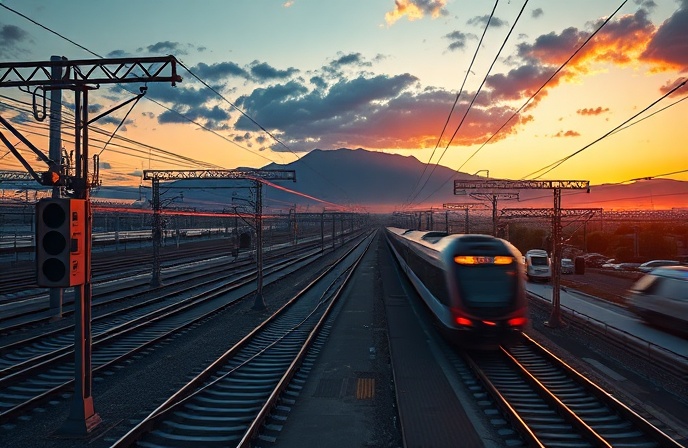EMR Aurora Fleet: UK’s Modern Intercity Rail Transformation
East Midlands Railway’s new Hitachi Aurora trains launch this December, transforming Midland Main Line travel with enhanced passenger comfort and reduced emissions. This railway upgrade boosts capacity.

East Midlands Railway (EMR) is set to launch its first Hitachi Rail-built Aurora train this December, ushering in a new era of Intercity travel on the Midland Main Line with enhanced passenger comfort and significantly reduced environmental impact. This pivotal introduction marks the beginning of a fleet-wide transformation for a key UK rail artery, promising a superior travel experience for thousands of commuters and long-distance travellers.
| Entity / Project | Key Detail |
| East Midlands Railway (EMR) / Aurora Fleet | Introduction of first train December, full fleet of 33 bi-mode trains to transform Midland Main Line service. |
| Value/Spec | £1.5 billion Midland Main Line upgrade; 66% carbon emission reduction; 24% more seats per carriage; 19% more legroom; 46% total seat increase. |
Revolutionizing Passenger Experience on the Midland Main Line
The Aurora trains, manufactured by Hitachi Rail, are designed to significantly elevate the customer journey. Passengers can anticipate a more comfortable and connected experience, featuring modern, spacious interiors, improved air conditioning systems, complimentary class-leading WiFi powered by multiple SIM cards for optimal signal strength, and power outlets at every seat. Additionally, clear customer information screens will be a standard feature, ensuring travellers are well-informed throughout their journey. This comprehensive upgrade aims to make travel on the Midland Main Line not just more efficient, but also more enjoyable.
Sustainable Performance Through Bi-Mode Technology
A cornerstone of the Aurora fleet’s advantage is its bi-mode capability. The 33-strong fleet of trains will operate on electric overhead lines, a direct benefit of the substantial £1.5 billion investment in the Midland Main Line upgrade. This electrification strategy will dramatically cut carbon emissions by an estimated 66 per cent, contributing to quieter and greener journeys for all passengers. The integration of this advanced technology underscores a commitment to sustainable rail travel and a reduced environmental footprint for the operator and the region.
Enhanced Capacity and Comfort Features
The introduction of the Aurora fleet will result in a substantial increase in passenger capacity. Each train in a typical five-carriage formation will offer 24 per cent more seats and over 19 per cent more legroom compared to the Meridian trains they are replacing. Once the entire fleet of 33 trains is operational, the Midland Main Line will see a significant 46 per cent surge in the total number of available seats, addressing growing demand and improving passenger flow. EMR, in collaboration with Derby-based design firm DG DESIGN, has meticulously sourced and adapted a new FISA Lean seat, refining it to provide enhanced comfort and support while incorporating essential practical features such as power and USB ports, generous legroom, coat hooks, well-sized seat-back tables, and under-seat storage for cabin bags.
Will Rogers, Managing Director for East Midlands Railway, commented on the significance of this rollout: “The introduction of our first Aurora train this December marks the start of a new era for Intercity travel across the East Midlands and South Yorkshire. Our Auroras have been designed with our customers at their heart; with more seats, greater comfort, better connectivity and a smoother, quieter ride. We and our colleagues at Transport UK are delighted to be delivering a railway that our customers, communities and our employees can truly take pride in.”
Industry Context: A Blueprint for Modern Intercity Rail
The launch of EMR’s Aurora fleet represents a significant step forward in modernizing intercity rail services within the UK. By integrating advanced bi-mode technology, substantial infrastructure investment, and a keen focus on passenger comfort and connectivity, this project sets a high benchmark for future rail upgrades. The project’s success will likely influence future fleet procurement and infrastructure development strategies across the global railway industry, emphasizing the growing importance of sustainability, passenger experience, and operational efficiency in meeting the evolving demands of public transportation.





